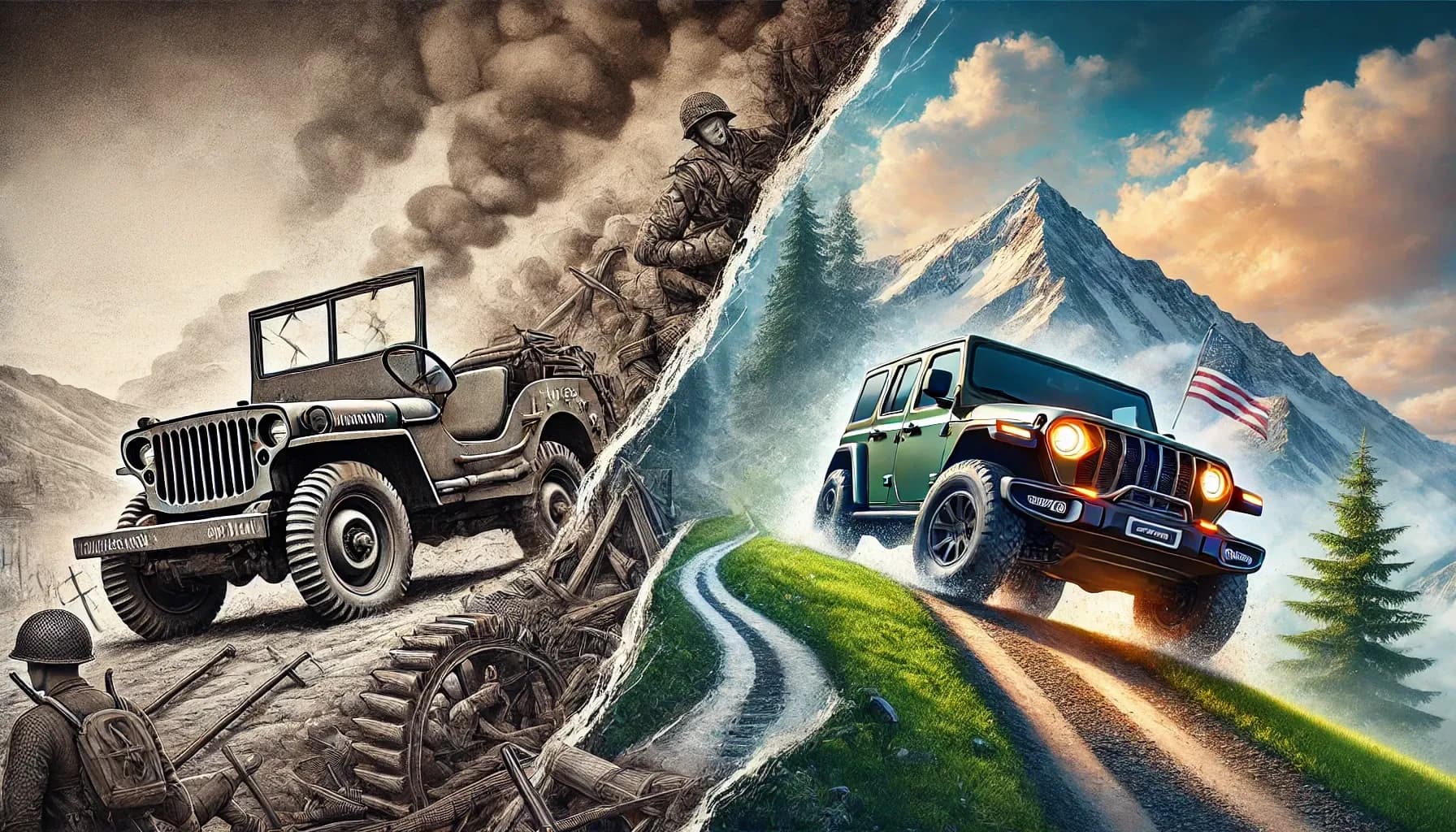
Date Published
From Battlefield to Backcountry: The Origins of the Jeep Legacy
Few vehicles in history have a legacy as storied and influential as the Jeep. Its name alone evokes images of rugged trails, overland expeditions, and adventurous freedom on four wheels. Yet, the roots of this iconic off-roader are firmly planted in a far more serious environment: the battlefields of World War II. The remarkable story of the Jeep is one of necessity, innovation, and evolution, ultimately shaping an American automotive icon that continues to thrive on both the backcountry trails and the highways of modern life.
Born out of Necessity
The beginnings of the Jeep date to the late 1930s, as global tensions were on the rise. The U.S. military recognized it needed a new kind of vehicle—one that was lightweight, maneuverable, and could handle the most unforgiving terrain. Older vehicles simply weren't cutting it. As a result, the Army asked American automakers to design a "light reconnaissance vehicle" that could replace motorcycles, sidecars, and other outdated modes of transport.
Competition was fierce. Bantam, Willys-Overland, and Ford all submitted designs, rushing to create a robust machine that met strict performance guidelines. Bantam managed to deliver the first prototype, known as the "Blitz Buggy," in 1940. However, Willys-Overland refined the concept further with its "Quad" design, and soon after, Ford also joined the effort with its GP (General Purpose) model. Ultimately, Willys-Overland won the contract to mass-produce the now-famous Willys MB, but because the demand was so high, Ford produced its own licensed version, too. By war's end, hundreds of thousands of these nimble vehicles had been manufactured.
Hardy Enough for War
The Willys MB quickly gained a reputation among service members for being incredibly reliable under punishing conditions. It was compact enough to navigate narrow mountain roads and agile enough to traverse muddy trenches. Soldiers found that its four-wheel-drive system provided robust traction in snow, sand, and swampy terrain. Field mechanics discovered the Jeep was relatively easy to service, with a design that allowed them to perform rapid repairs on the battlefield.
Beyond its practical advantages, the Jeep also contributed to morale. According to soldier accounts, it was a near-constant companion at every major front. In photos and newsreels, you see Jeeps in the deserts of North Africa, on the beaches of Normandy, and crossing rivers in the Pacific Theatre. Its can-do spirit and unassuming presence captured the hearts of those who drove it, cementing its reputation as an indispensable tool of war.
Transition to Civilian Life
When the war ended, Willys-Overland astutely recognized the vehicle's postwar potential. Americans returned home hungry for the next big thing—an automobile that could help them navigate city streets while also satisfying the newfound desire for outdoor adventures. Willys introduced the first civilian Jeep, the CJ-2A, in 1945. Known as the "Universal Jeep," it appealed to farmers, ranchers, and other professionals who needed a versatile workhorse. Its rugged build, four-wheel drive, and utilitarian design made it ideal for a variety of tasks, from plowing fields to hauling small trailers.
As suburban life became more common, the Jeep found new fans among outdoor enthusiasts. Its off-road capabilities were legendary, and the idea of being able to drive practically anywhere was irresistibly exciting. This fusion of practicality and adventure sparked the birth of a new automotive culture.
Evolving Through the Decades
In the decades after World War II, Jeep continued to evolve. The CJ series remained a beloved fixture, undergoing various iterations while staying true to its original design principles—simplicity, durability, and off-road prowess. Companies like Kaiser, then AMC, and eventually Chrysler took turns stewarding the brand, experimenting with new designs such as the iconic Wagoneer and the Cherokee. These models blurred the line between trucks and passenger cars, setting the stage for the modern SUV.
Yet, despite new technology and design flourishes, the heart of every Jeep has remained the same: an indomitable spirit that started on the front lines. Whether it's the Wrangler scaling rocky ridges in Moab or the Grand Cherokee conquering snowy highways, each Jeep carries the DNA of its military-grade ancestor. Owners and enthusiasts remain drawn to this heritage, cherishing the Jeep's blend of toughness, simplicity, and go-anywhere attitude.
A Lasting Influence
The Jeep legacy extends far beyond the vehicles themselves. It inspired entire subcultures and spurred the development of modern off-road sports, clubs, and global overlanding communities. Military-inspired features such as low-range gearing, rigid axles, and integrated 4x4 drivetrains have become standard in modern off-road-oriented vehicles. Meanwhile, Jeep events and gatherings—whether they're small meetups or large-scale jamborees—celebrate camaraderie and a shared love of adventure that the original Willys MB helped pioneer.
In the end, it's remarkable how a simple demand for a battlefield-ready transport gave rise to a beloved automotive icon. The Jeep story is more than a historical footnote—it's a symbol of resilience, adaptability, and unity. From surviving the harshest warzones to exploring tranquil forest trails, the Jeep's journey mirrors that of the people who rely on it: persevering, resourceful, and ready for whatever comes next. Its place is assured both in the annals of military history and the garages of countless enthusiasts who keep this rugged spirit alive.
Related Articles
Modern Adventurers: Jeep's Evolution Through the Decades
From the Willys MB to the modern Wrangler, explore how Jeep has evolved while staying true to its adventurous roots.
Trailblazers: How Jeep Pioneered the Off-Road Lifestyle
Discover how Jeep transformed from a military vehicle into the vehicle that defined and popularized the off-road lifestyle and adventure culture.